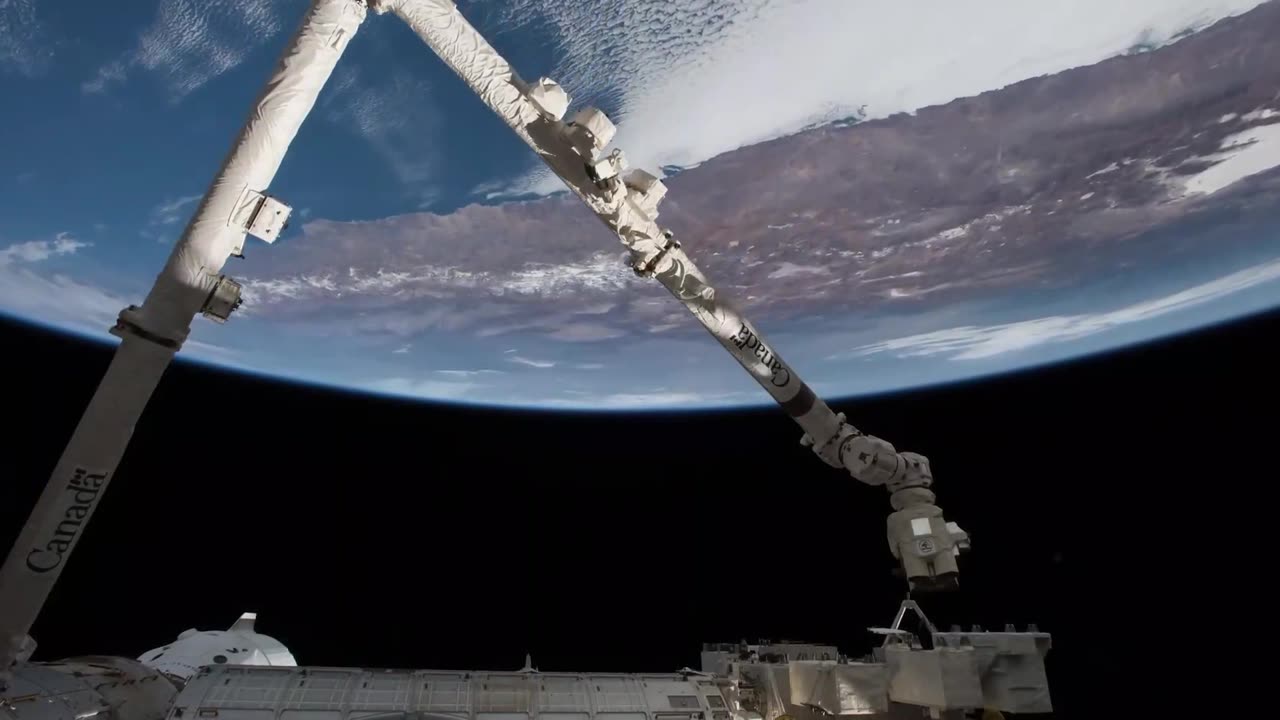Premium Only Content

Earth from space last part
Earth is the third planet from the Sun and is the only known planet to support life. Here are some key facts about our planet:
Size and Composition: Earth has a diameter of about 12,742 kilometers (7,918 miles) and is composed of various layers, including the solid crust, mantle, outer core, and inner core.
Atmosphere: The Earth's atmosphere is a mixture of gases, primarily nitrogen (78%) and oxygen (21%), with trace amounts of other gases like carbon dioxide, water vapor, and argon. It plays a vital role in supporting life and regulating the planet's climate.
Hydrosphere: Earth is often referred to as the "Blue Planet" due to its abundant water. About 71% of the Earth's surface is covered by oceans, seas, and other bodies of water.
Lithosphere: The Earth's solid outer layer is called the lithosphere, which consists of tectonic plates that move and interact, leading to processes like earthquakes and volcanic activity.
Life: Earth is teeming with a wide variety of life forms, including plants, animals, and microorganisms. It's the only place in the universe where life is known to exist.
Geological History: The Earth has a complex geological history, including the formation of mountains, valleys, and other landforms over millions of years.
Moon: Earth has a single natural satellite, the Moon, which orbits around it and affects phenomena like tides.
Climate and Weather: The Earth's climate and weather patterns are influenced by factors such as the Sun's energy, ocean currents, atmospheric circulation, and greenhouse gases.
Ecosystems: Earth's diverse ecosystems range from deserts and rainforests to polar regions and deep oceans, providing habitats for a wide array of species.
Space Exploration: The study of Earth, known as Earth science, encompasses a wide range of disciplines, including geology, meteorology, oceanography, and more. Additionally, space agencies have sent satellites and spacecraft to study Earth from space.
-
 17:17
17:17
Lady Decade
21 hours ago $1.69 earnedMortal Kombat Legacy Kollection is Causing Outrage
5.09K4 -
 35:51
35:51
Athlete & Artist Show
22 hours ago $3.97 earnedIs Ryan Smith The Best Owner In The NHL?
9.43K -
 22:56
22:56
American Thought Leaders
1 day agoCharles Murray: I Thought Religion Was Irrelevant to Me. I Was Wrong.
8.07K2 -
 36:22
36:22
Brad Owen Poker
3 hours agoGIGANTIC $17,000+ Pot In BOBBY’S ROOM! TRAPPING Top Pro w/FULL HOUSE!! Big Win! Poker Vlog Ep 326
8.37K -
 3:53
3:53
NAG Daily
20 hours agoRUMBLE RUNDOWN: DREAM HACK SPECIAL W/Greenman Reports
5.63K6 -
 1:28
1:28
Damon Imani
1 day agoThey Laughed at Trump’s Cognitive Test — Damon Made Them REGRET It!
9.06K6 -
 9:14
9:14
Freedom Frontline
22 hours agoAdam Schiff PANICS As Eric Schmitt Exposes His Dirty Lies LIVE
6.17K4 -
 10:32
10:32
GBGunsRumble
1 day agoGBGuns Armory Ep 153 Adler Arms AD-9`
5.47K2 -
 35:53
35:53
Degenerate Plays
2 hours ago $0.09 earnedRuckus Randy And Repair Ronald (Socks On) - Call of Duty: Modern Warfare 2 (2009) : Part 7
3.42K1 -
 38:35
38:35
Stephen Gardner
23 hours ago🔥What JUST leaked out of Congress. PROVES Trump RIGHT!!
95.2K126